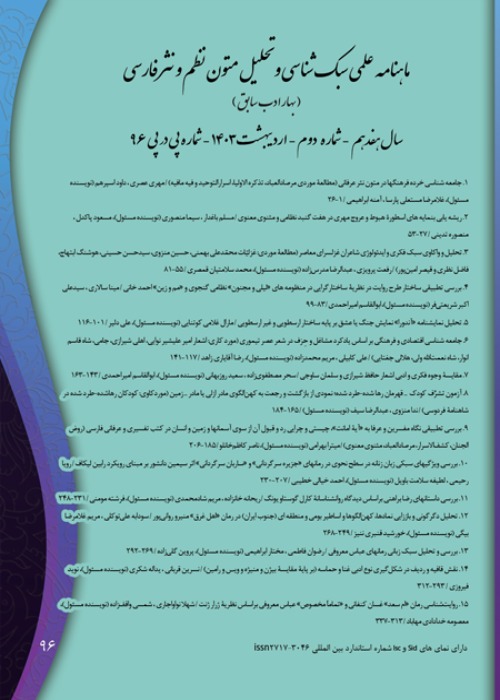Discourse analysis of the words Nasafi Tafsir in comparison with the translation section of Kashf al-Asrar
Nasafi Tafsir by Najmuddin Nasafi is one of the most important works of the fifth and sixth centuries AH in which the author provided a concise translation of the Qur'an. Has interpreted. The discourse analysis of these two books can show the principles of belief and ideology of the authors. One of the most important theories in the field of discourse analysis is Norman Fairclough's theory, which examines the relationship between the internal and external criteria of the text. Fairclough examines the text in three axes of description, interpretation, and explanation. In the word description stage, the grammar and structure of the text are examined. The discussion of words has a special place because it is the foundation of a text. Fairclough believes that the words of a text can be analyzed discourse in three areas: empirical value, relational value, and the expressive value of words. By examining these three axes, we can understand the spiritual, psychological, personality, belief, ideological, philosophical characteristics of the author of the text and the prevailing conditions in his time.
In this article, the authors try to examine the discourse in the translation of these two books in the field of word analysis with a descriptive-analytical method and libraries.
Semantic creativity in the field of empirical value of words in Meybodi's interpretation is more complete than Nasafi interpretation. Meybodi brings together words and phrases that are not synonymous, and sometimes takes into account the causal relationship in establishing this relationship; But Nasafi in such cases tries to explain more with different interpretations and his goal is to express the importance of the issue. Also, the use of words in the metaphorical sense in Meybodi's interpretation is more than Nasafi, and in the field of the value of word relations, as a result of which the text has a better interpretation and beauty, Nasafi interpretation has acted more powerfully than Meybodi. Nasafi is stronger than Meybodi and the choice of words with a semantic load that affects the emotions of the audience in his words is more.
In terms of empirical value of words, Meybodi is more creative than Nasafi in his interpretation and has acted better. It has a relative effect on the expressive feelings of the audience more than Meybodi.
- حق عضویت دریافتی صرف حمایت از نشریات عضو و نگهداری، تکمیل و توسعه مگیران میشود.
- پرداخت حق اشتراک و دانلود مقالات اجازه بازنشر آن در سایر رسانههای چاپی و دیجیتال را به کاربر نمیدهد.


